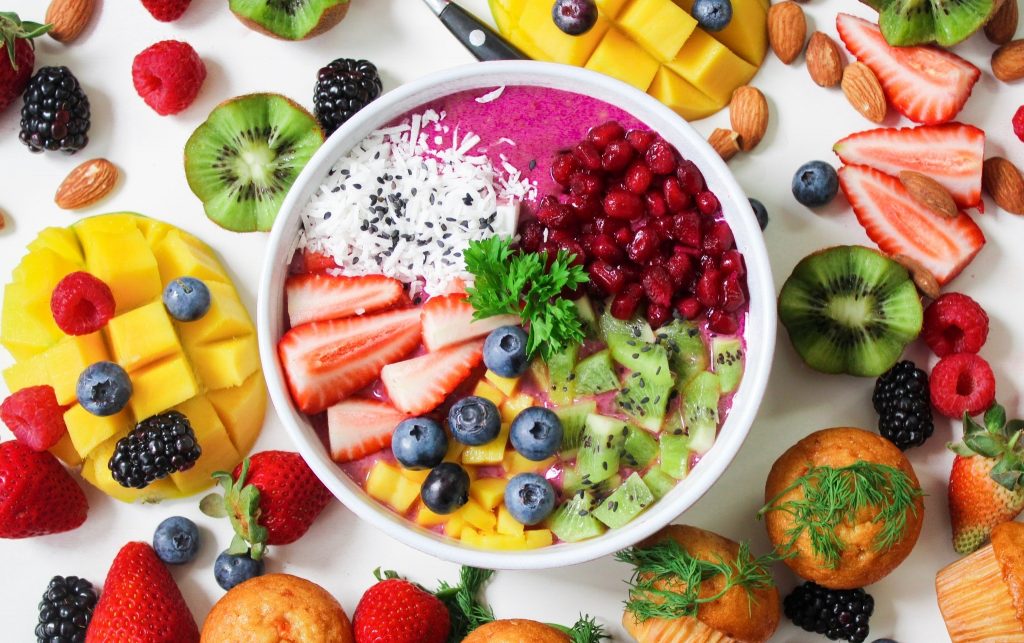Three Fad Diet-Free Approaches to Healthy Eating
We have spent the past few weeks discussing trending diets on this blog and in our newsletter. Maybe now you’re feeling good about bypassing strict food rules, but wondering where that leaves you. At Athens Nutrition, we believe in personalizing every approach. We develop eating plans that meet our clients’ needs based on medical history, food and cooking preferences, lifestyle and schedule, and overall wellness goals. No two plans are alike. With that said, we do have some tried and true evidence-based approaches that tend to work with many of our clients.
Eating Intuitively
What is intuitive eating (IE)? Professor Tracy L. Tylka has extensively studied IE and describes this eating approach as “freeing” and ultimately the “antithesis of dieting.” This is not considered a diet as there is no measuring of food, tracking calories, or weighing oneself. Additionally, no foods are labeled “good” or “bad.” Eating intuitively (i.e. honoring your hunger and satiety cues) allows you to understand your personal eating and behavioral patterns. These observations can help you work towards building a peaceful relationship with both food and your body. You may overeat less, or perhaps not restrict as much, since you are listening more closely to these internal hunger and satiety cues. This allows for a more sustainable, healthy weight. According to a review from Public Health Nutrition, the IE approach is consistently associated with healthier weights, improved mental health, and lower blood pressure and cholesterol levels. Individuals are also more present in social situations because they experience less food-related stress. Constantly overthinking about intake can have negative effects such as turning to a more restrictive diet.
The book, Intuitive Eating, is a great resource for learning these principles. Written by two Registered Dietitians, Evelyn Tribole and Elyse Resch, this book encourages you to find the weight you were meant to be by nurturing your body and rejecting the diet mentality. In addition to reading this book, you may also find The Intuitive Eating Workbook to be a helpful tool for developing a positive body image. This workbook shows you how to recognize your body’s natural hunger cues by offering new ways to approach food. You can ultimately learn how to enjoy food again by following the ten principles of intuitive eating, outlined in the books.
Consuming Fiber/Water-Based Foods
A study published in the Annals of Internal Medicine suggests that aiming to eat 30 grams of fiber each day can help an individual lose weight, lower blood pressure, and improve the body’s response to insulin just as effectively as a more complicated diet. Sufficient amounts of fiber can help increase your satiety, enable regularity, help maintain good heart health, and promote weight loss. Since fiber adds bulk to the diet, fiber-rich foods can help you feel satisfied and fuller for a longer period of time. Since most high-fiber foods are also low in calories, this approach to eating can help you achieve and maintain a healthy weight. Highly processed foods, such as refined carbohydrates, have fiber stripped from them, which can lead to spikes in blood sugar. According to the U.S. Food and Drug Administration (USDA), the recommendation for fiber intake is about 14 grams per 1,000 calories, meaning an adult eating 2,000 calories should aim for at least 25 grams per day. Diets high in fiber can be both easy and tasty. Fiber-rich meals include oatmeal or high-fiber cereal with berries, salad topped with chickpeas and nuts, and a vegetable stir-fry with brown rice. Remember that fiber absorbs water, so it is important to include plenty of water and gradually increase your fiber intake to avoid discomfort.
Another great resource is The Volumetrics Eating Plan by Dr. Barbara Rolls. This plan includes plenty of foods that have a high water content, such as fruits and vegetables, and smaller amounts of calorie-dense foods. The premise of this plan allows individuals to eat satisfying amounts of food without high amounts of calories. This guide shows you how to choose foods that control your hunger while losing weight and provides 125 recipes that include satisfying portions of delicious, nutritious foods.
Tracking and Telehealth
For long-term behavioral changes to become healthy habits, you need to be aware of your eating patterns. Using a tracking program like Nutritionix Tracks, the app used at Athens Nutrition, is an excellent way to notice eating behaviors that may sabotage weight loss. Staying accountable by recording food and beverage intake is one way to set yourself up for success. You are able to take into consideration the progress you are making and observe any personal, physical, or psychological boundaries keeping you from achieving your goals. Research published in 2019 by JMIR Mhealth and Uhealth, suggests that those who regularly input their meals into a tracking app are able to lose more weight than those who are just watching their diet.
The Obesity Action Coalition supports self-monitoring for success with weight management and lifestyle changes. Commonly used self-monitoring techniques include food diaries, exercise logs, and various equipment (pedometers, accelerometers, metabolic devices, etc.). Note that for some people, tracking can lead to an unhealthy obsession with food intake. You know your body best.
The dietitians at Athens Nutrition will encourage you to eat intuitively, help you increase your fiber and water intake, and will give you the tools to track your eating and lifestyle habits. We will provide individualized feedback on your behaviors to help you to make modifications that translate into positive behavior changes. We do not promote the elimination of foods or food groups; rather, we support the consumption of varied nutrients and recognize the importance of pleasure in eating behaviors.
